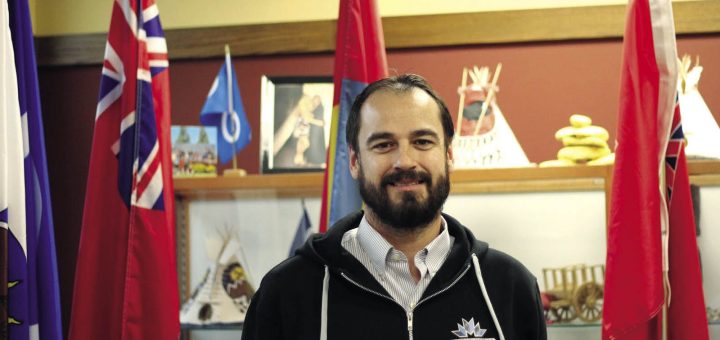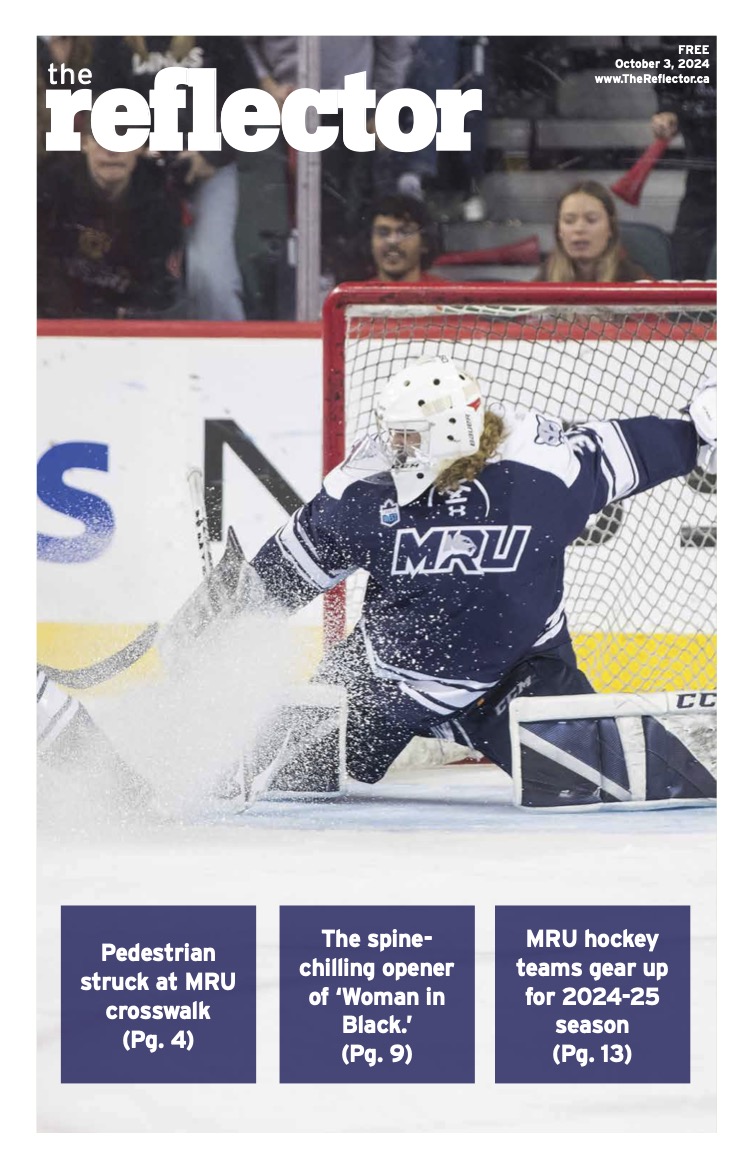Iniskim Centre builds community

The on campus resource, mainly for Indigenous students, invites others to participate
By Mariam Taiwo, Contributor
Hidden on the second floor of main street, just across from B hallway, The Iniskim Centre is a support and resource centre for all Mount Royal University students on campus, but primarily it’s services are geared towards self-identified Indigenous students.
The centre promotes community and wants students to have a sense of belonging. The Iniskim Centre provides a calm and quiet place of refuge for students to meet other people and build friendships, eat and smudge (pray) together.
The Iniskim Centre opened its doors in the fall of 2006. That year, the centre worked together with community partners, especially a handful of elders, to build the centre in a way that would help Indigenous students.
The elders came up with the name of the centre. The word “Iniskim” is very powerful in Blackfoot culture, which is the dominant Indigenous culture in the area. The word Iniskim means “Buffalo Calling Stone” and has special meaning to the Blackfoot people.
The centre has a lot of programs that it offers to students. One of the most important programs that the Iniskim Centre provides is the Aboriginal Education program. “The AEP was created from community, realizing that students that are leaving Grade 12 and coming into post secondary are experiencing culture shock,” says Tori McMillan, the AEP administrator.
The Iniskim Centre also provides other important services to students such as scholarships, daycare, counselling, wellness, tutoring, childcare, housing, recreation, spirituality services and so much more. They also have student learning services in the centre open to their students.
The Iniskim Centre is a place where Indigenous students, as well as other students, can come and share their frustrations, worries, struggles and even things that make them happy.
“Sometimes, students come in to share the good news that they did well on a test, something frustrating that happened to them on the transit or an interaction with a teacher or student,” says McMillan.
The centre provides them some perspective to their situation so they can see that other people are also learning, growing and developing in similar ways. As long as there is a sense of respect underneath, they can work through things like language difficulties and updated notions of misconceptions together.
McMillan says that one of the greatest gifts that the elders have given to them is the ability to share knowledge. Students can feel free to come in and use the centre’s resources, as well as learn more about Indigenous cultures and spirituality.
McMillan says another key component of holism in the Iniskim Centre is that they want student to be able to address their mental, physical, spiritual and emotional issues.
McMillan finds that a lot of students are wary when they come to post secondary because they don’t know if they can be spiritual in a secular school.
“Yeah, it is your right, we will provide a space and teachings for you,” McMillan tells them.
“Students often tell us how much it helps to balance their souls and be prepared for the work they do,” he adds.
“We definitely want to break down any notions that unless you’re native, you can’t go down that hallway, students need to know that it’s for everybody.”
The number one message that McMillan wants students to know about the Iniskim Centre is that it doesn’t matter if you’re Indigenous or not, the centre is building community for everyone, not just among themselves. There are lessons and teachings that everyone can learn from each other in such a multicultural school like Mount Royal University.




